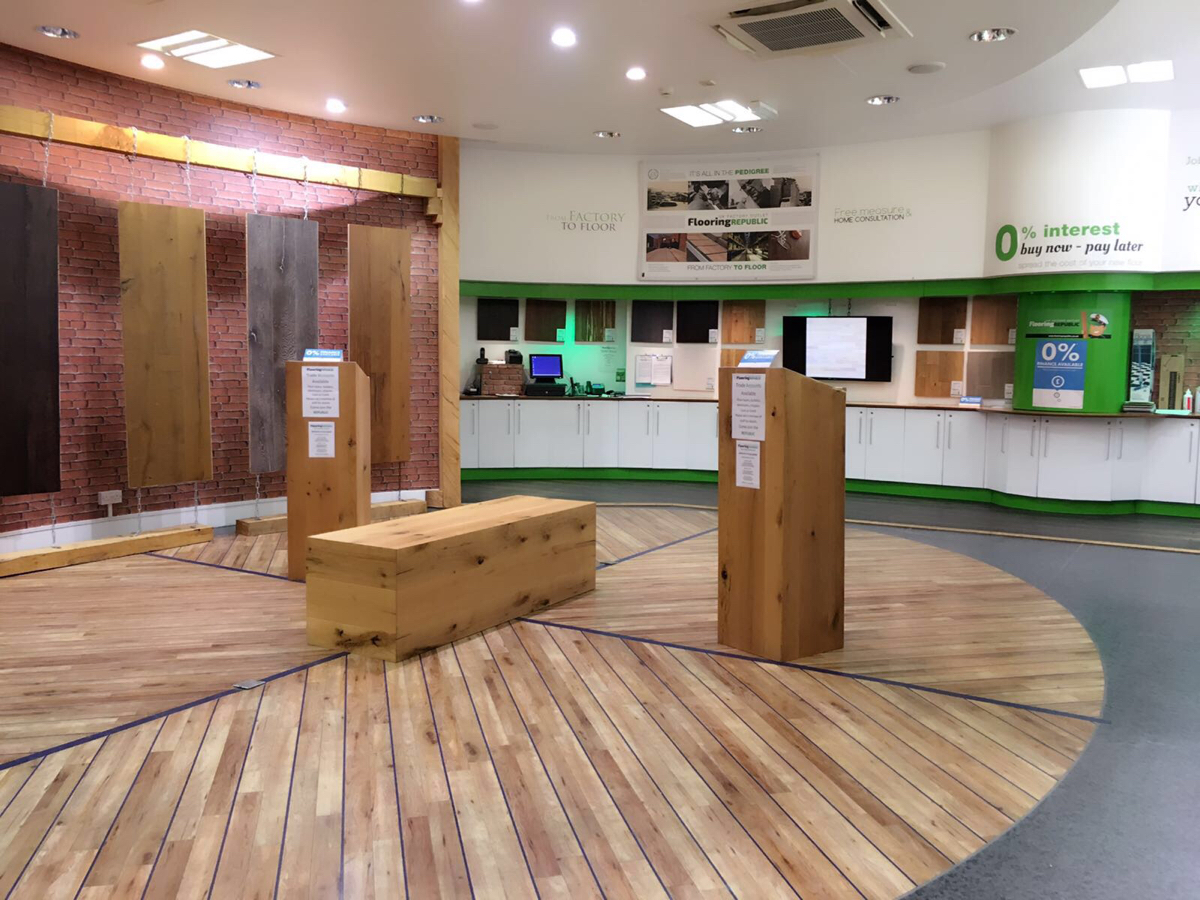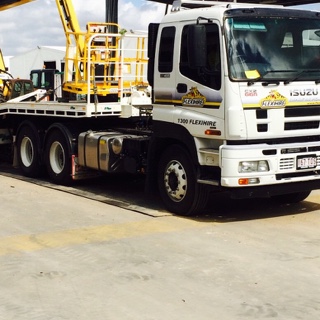Title Page
-
Conducted on
-
Prepared by
-
Location
Compressed Gases
-
Do all compressed gas cylinders not in use have protective caps in place?
-
Are compressed gas cylinders secured in an upright position to prevent falling, when stored and in use?
-
Are all compressed gas cylinders legibly identified as to the contents by stenciling, stamping, or labeling?
-
Are stored oxygen cylinders separated 20 feet, or by a 5 ft. high (0.5 hr) barrier, from fuel-gases or combustible materials?
-
When lifting and moving cylinders, are proper techniques used, i.e. cylinders are NOT lifted by the caps, dragged on the floor, or lifted by slings or magnets?
Electrical
-
Are damaged or frayed electrical wires; damaged extension cords, panel doors, or plugs; or wiring segments with deteriorated insulation present in the workplace?
-
Are panel boxes free and unobstructed (a minimum of 30 inch clear space in front?
-
Are electrical panels identified as to what they control?
-
Are circuit breakers marked as to what equipment they control?
-
Is all metallic fixed electrical equipment grounded?
-
Does all equipment connected by cord and plug have grounded connections (except double insulated, portable power tools)?
-
Is fixed wiring (opposed to flexible cords and cables) used for all permanent equipment and facility installations (except pendants, fixtures, cranes, etc)?
-
Are flexible cords and cables free from splices and tapes?
-
Are fixture wires exposed? Fixtures may have no live parts normally exposed to employee contact. (Rosettes & cleat-type lampholders & receptacles located 8' above floor may have exposed terminals.) Fixtures in damp locations shall be identified for the purpose & shall be so constructed or installed that water cannot enter or accumulate in wireways, lampholders, or other electrical parts.
-
Are extension cords protected? Temporary electrical installations of more than 600v may be used only during periods of tests, experiments, emergencies, or construction-like activities.
Emergency Evacuation
-
Are emergency evacuation plans developed and posted for each shop area?
-
Is the lettering on exit signs at least six inches high, with letter strokes 3/4 inch wide?
-
Are all exits marked with an exit sign and illuminated by a reliable light source?
-
Are exit routes kept free of obstructions?
-
Is the direction to exits, when not immediately apparent, marked with visible signs?
-
Are doors or other passageways that are neither exits nor access to exits and located where they may be mistaken for exits, appropriately marked "not an exit", "to basement", "storeroom", etc?
Eye Washes, Showers, First Aid Kits
-
Are the eye washes/showers operable (and full, if self contained)?
-
Are the eye washes/showers readily identified by a highly visible sign or (green) post marking?
-
Are eye washes/showers easily accessible and not blocked?
-
Where first aid kits are provided, are the kits stocked and maintained?
-
Are eye wash nozzles protected from airborne contaminants?
Fire Safety
-
Are employees smoking only in designated area, and are "No Smoking" signs posted in areas where smoking may create a fire hazard?
-
Are nozzles and containers electrically connected (grounded) during transfer of Class I liquids?
-
Are fire extinguishers readily available (access not blocked) and locations properly marked?
-
Are metal cans with self closing lids, available and used for disposable of flammable wastes, such as oily rags, cleaning cloths, etc?
-
Are portable extinguishers inspected monthly?
-
Is access to fire hose cabinets and SCBAs unobstructed (not blocked)?
-
Are flammable storage cabinets properly marked (Flammable- Keep Fire Away), kept in good condition, and properly used (Not more than 60 gal. Class I or Class II liquids, nor more than 120 Class III liquids)?
-
Are standpipe hoses equpped with shut-off type nozzle?
-
Are fire hoses used only for fire equipment?
-
Are all fire alarm pull stations unobstructed?
Hazard Communication& Hazardous Materials
-
Are chemical identification labels attached to all hazardous chemical containers?
-
Are hazard warnings made known to employees via label, sign, placard, batch ticket, operating procedures, HAZCOM handbooks, or other similar means, for each product?
-
Have all employees been trained in hazardous material use (shop specific HAZCOM), including the proper use of personal protective equipment?
-
Are hazardous materials waste containers in good condition, of compatible construction for the materials, stored, kept closed, and emptied on a regular basis?
-
Are Material Safety Data Sheets (MSDSs) available for all chemicals used?
-
Any unidentified bottles, spray bottles, or any other container marked of contents?
Hand Tools
-
Are all hand tools in good condition, such as handles tight in the tools, wooden handles free from splinters and cracks, chisels and wedges free of mushroom heads?
-
Are tool retainers installed on each piece of pneumatic equipment which may eject the tool without such a retainer?
-
Are electrically powered hand tools with worn or deteriorated insulation or other worn parts removed from service or returned for repair?
-
Are guards installed and used by the operators on portable powered tools, such as circular saws, grinders, and sanders?
-
Are portable electrical hand tools grounded? (double insulated tools are acceptable without grounding)
Portable Abrasive Wheels
-
Are contact surfaces flat, and free of foreign material, and inspected for such conditions prior to each use?
-
Are all wheels "ring tested" prior to installation?
-
Are the spindle speeds of the tool checked prior to mounting of wheels to ensure it does not exceed maximum operating speed of wheel?
Housekeeping
-
Are break areas clean and sanitary, i.e. floor areas and tables free of litter / food items?
-
Are outside storage areas free of debris and material neatly stored/stacked?
-
Are work areas clean and orderly, i.e. no accumulated oil, dirt, metal chips, waste or rags and storage areas neatly arranged?
-
Are air nozzle pressures (for cleaning) reduced to 30 psi or less when obstructed or blocked, and only used with chip guards (barriers or protective shields) and eye protection in place?
-
Are mops, brooms, brushes, portable tools, and equipment, picked up and returned to storage, when not in use?
-
Are ledges clean, material picked up in walkways, hoses put away, trash off floors, and excess coal dust in need of wash down?
-
Are any lights burned out?
Ladders (Portable)
-
Are all wood ladders free from sharp edges/splinters, and appear sound with no compression failures, warping, decay, or other irregularities?
-
When in use, are the bases of ladders placed one-quarter of their length from the wall or upper support, and if extending to a roof, do the ladders extend at least 3 feet above the point of contact?
-
Do all step-ladders include a metal spreader or locking device sufficient to hold open the front and back sections?
-
Ladders marked and in good condition. Secured or hung properly to eliminate any damage. Ladders free of excessively dented rungs, cleaned of oil/grease. Any defects of any kind?
Local Exhaust Ventilation
-
Are all ventilation systems working properly (not clogged or maladjusted) and capturing dusts, vapors, and fumes as designed during associated processes, and no reports of eye, nose or throat irritation (particular operations to note: abrasive blasting, grinding & polishing, open surface tanks, spray finish)?
Machine Guarding - General
-
Are all points of operation, rotating or revolving parts, and nip points, guarded?
-
Are all guards and safety devices in good condition and function as designed?
-
Are special hand tools available and used for placement and removal of material as a supplement to machine guarding?
-
Are all fixed location machines securely anchored to prevent walking or moving?
-
Are operators and others protected from flying chips, debris and sparks by barrier/shields?
Guarding - Abrasive Wheel Machines
-
Are work rests within 1/8" of the wheel?
-
Are tongue guards within 1/4" of the wheel?
-
Are contact surfaces flat, and free of foreign material, and inspected for such conditions prior to each use?
-
Are all wheels "ring tested" prior to installation?
-
Are guards installed to cover spindle ends, nuts and flanges?
-
Are the spindle speeds of the machine checked prior to mounting of wheels to ensure it does not exceed maximum operating speed of wheel?
Guarding - Power Presses/Shears
-
Are all shears and presses equipped with two-handed grips, light curtains, or barrier guards to prevent access to the point of operation during cycling of the machine?
-
Are foot controls covered to prevent accidental tripping?
Guarding - Power Transmission Equipment
-
Are belts, pulleys, sprockets, chain drives, flywheels, couplings, pulleys, shafts, and fans fully enclosed/guarded (applies to equipment located up to 7 feet above the standing surface)?
-
Are coupling with bolts, nuts, or set screws extending beyond the flange of the coupling guarded?
Guarding - Woodworking Machines
-
Are power controls and adjustments located within reach of the operator, and such that the operator does not have to leave his station?
-
Are guards installed and used by the operators on ripsaws, table saws, circular saws, swing cut-off saws, radial saws, jointers, planers, lathes and other woodworking machines?
-
Are band saws blades fully enclosed or guarded, except the working portion between the bottom guide rolls and the table?
-
Are portable circular saws, with blade diameters greater than 2<br>inches, equipped with guards above and below the base plates?
-
Are radial saws: 1) equipped with: <br>a) guards on the upper portion of the blade, <br>b) non-kickback fingers for ripping, <br>c) and adjustable stop for forward travel; and <br>2) installed so the cutting head returns to the starting position when released?
Energy Isolation
-
Have all employees performing maintenance or service on machines and equipment been trained in lockout/tagout, and do all employees follow the program requirements?
-
Are all machines and equipment, which could release stored energy, be unexpectedly energized, or start-up, tagged out and isolated from the energy sources before any maintenance or servicing?
Confined Space Entry
-
Where identified permit required confined spaces exist, are permits always obtained, entry conditions verified, proper equipment provided (including fall protection), and confined space program followed?
-
Have all employees who enter confined spaces been trained in the confined space program?
Material handling & Storage
-
Are daily inspections conducted by the operators of material handling equipment to verify the equipment (hooks, safety latches, ropes, slings, chains, and operating systems) is in good condition, i.e. free of cracks, deformation, excessive wear, and distortion?
-
Are periodic inspections conducted on material handling equipment to verify the equipment is in good condition, and inspection tags are updated accordingly? * Monthly-hooks, ropes, hoist chains?
-
Are materials, piled, racked, or stored in a manner so as to not collapse, shift, or fall?
-
Are load limits marked on second floor, balcony, and overhead storage areas?
Personal Protective Equipment
-
Are KCPL employees wearing FR clothing as described in KCPL Rule (sleeves down, etc.)?
-
Are approved safety glasses and side shields and/or goggles used by all employees? (Prescription glasses included.)
-
Are (Approved) hard hats used by all employees in areas or performing jobs designated as requiring hard hats (where there is a potential for head injuries from falling objects, or the head is exposed to electrical shock hazards)?
-
Are all employees wearing protective footwear (where there is a danger of foot injuries from falling or rolling objects, objects piercing the sole, or the feet are exposed to electrical hazards), and as described as required in our KCPL Rule?
-
Are the proper protective gloves worn by all employees where exposed to absorption of harmful substances, severe cuts or lacerations, severe abrasions, punctures, chemical burns, thermal burns, or harmful temperature extremes?
-
Are approved respirators used by all employees performing operations which require the use of respirators?
-
Are face shield and goggles available at Pedestal Grinder?
-
Are respirators stored in a convenient, clean, and sanitary location (not in lockers or tool boxes, unless they are in carrying cases or cartons)?
-
Are respirators routinely inspected before and after each use?
-
Are respirators cleaned and disinfected regularly?
-
Are employees wearing hearing protection? Double-hearing<br>protection where designated?
-
Are fall protection devices (lifelines, safety lanyards, harnesses) used by all employees working 4 feet above ground, OR the next lower working surfaces, which are not protected by standard guardrails?
-
Is fall protection equipment inspected prior to each use for mildew, wear, damage, and deterioration, and removed from service if strength or service is affected?
Radiation
-
Are all radiation areas posted with signs and/or barriers?
Tank Operations
-
Have all employees working in and around open surface tanks been instructed as to the hazards of their job, and in the use of proper personal protective gear?
Transportation Equipment
-
Have all operators of fork trucks, tractors, platform lift trucks, motorized hand trucks, and other industrial trucks (H&H), been trained in inspection and operation of the truck(s) and have current certification to operate such a truck?
-
Are all industrial trucks used being inspected prior to use at each shift, and defects reported and/or repaired? Check inspection sheets to verify.
-
Are industrial trucks being used properly?
-
Are seatbelts/PPE being used?
Walking/Working Surfaces
-
Are aisles free of obstructions?
-
Are all floor areas clean and dry? If a wet process, is the area drained and are floor mats or platforms used to provide a dry standing surface?
-
Are temporary floor openings (12" or more in the least dimension) guarded by standard railings, covered, or attended by someone?
-
Are permanent floor openings (12" or more in the least dimension) guarded by railings?
-
Are floor holes (less than 12" in the least dimension, but more than 1"), into which a person can walk, protected by standard railings, attended by someone, or covered?
-
Are floor holes (less than 12" in the least dimension, but more than 1"), into which a person cannot walk, covered so that no opening greater than 1" wide exists?
-
Do all stairs with four or more risers have standard hand rails?
-
Are slip resistant features of stair treads and nosing maintained?
-
Do open-sided floors or platforms more than 4 feet above the floor or ground level have guard rails? Are toe boards provided where employees may be working or walking below?
-
Are there any uneven surfaces both inside/outside of plant need fixed and/or maintained?
-
Are all low head room clearly marked/identified?
-
Any walking surfaces need marked for any reason?
Hot Work
-
Are fire precautions implemented before work is initiated, such as removing combustible materials, establishing fire watch?
-
Are all welders and welder helpers provided with, and using, helmets, gloves, glasses, and protective clothing?
-
Are areas around welding operations shielded from the welding operations?
-
Are all employees operating arc welding equipment properly trained and qualified?
Welding
-
Are all cables, connections, and electrode holders inspected daily for damage and repaired and replaced before use?
-
Is mechanical ventilation provided for areas with less than 10,000 cu. Ft. per welder, or ceiling heights less than 16 ft. or in confined / restricted cross ventilation areas?
-
Do all fuel-gas and oxygen fed systems include protective devices to prevent: *Backflow of oxygen? *Flashback into the system? *Excessive back pressure of oxygen
Ergonomics
-
Does the job require performing the same motions every few seconds for more than two hours at a time?
-
Do work positions require employees to maintain a fixed or awkward position (bent wrists, arms raised overhead, bent back, kneeling, stooping, squatting) for more than a total of two hours per shift?
-
Does the job require using vibrating, or impact tools or equipment for more than a total of two hours per shift?
-
Does the job require manually handling or lifting objects weighing more than 25 pounds, more than once per shift?
-
Are the jobs or tasks mechanically or electronically paced, such that there is no control over the work pace for more than four hours per shift?
Other
-
Are there any other potential hazards not listed above, present in the workplace?










